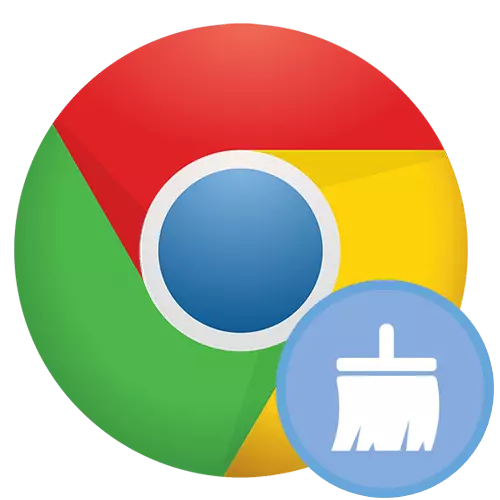
Important information
Do not forget that many of the applicable settings will affect all devices where the login is performed to the Google account and synchronization is used. Therefore, either disconnect the synchronization on the device where to clean, or configure items that will not be synchronized. You can do this through the "Menu"> "Settings".
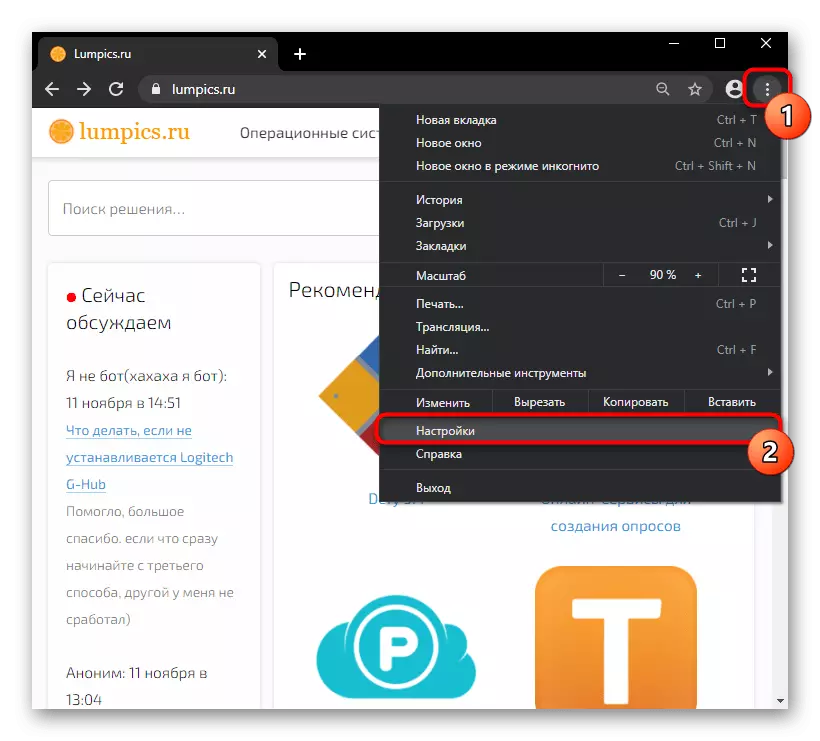
In the first case, you will need to click on the "Disable" button, and in the second - click on the row with the profile and select data for synchronization.
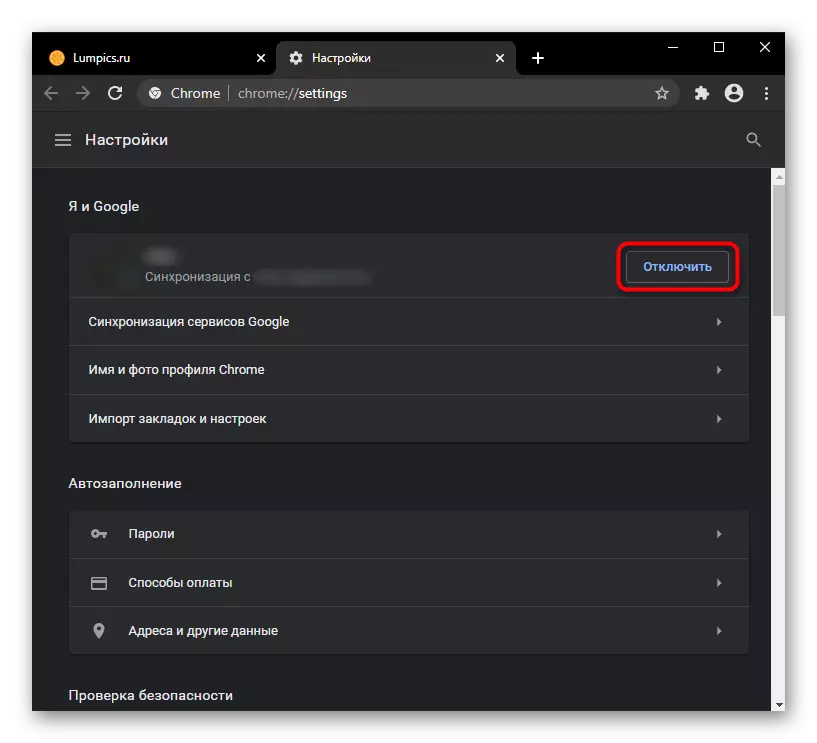
If it happened that the browser does not start at all, instead of cleaning it, we suggest familiarizing yourself with the following manuals.
Read more:
What to do if Google Chrome does not work
What to do if Google Chrome does not start
Option 1: Default Reset Settings
Quite often, users who wish to clear the browser from unnecessary data, just resort to the built-in Google Chrome cleaning function. Its plus is that all personal data is preserved, and what can affect the stability of the program and the speed of its operation, is deleted / disabled. During this cleaning will be reset and cleaned:
- Settings of the main page (the page opens when you press the button with the house icon will be redirected to Google's search engine);
- Quick Access Page Settings (the page opens when the browser starts will be a new tab);
- Search engine settings (search engine for the address bar will be from Google);
- Mounted tabs (will be unfolded);
- Extensions (will be disabled, but will remain installed);
- Temporary data (Cookie, cache, download history, etc.);
- Permissions for sites (for example, using the microphone, blocking the pop-up windows and other parameters will be returned to the original state).
At the same time will be saved:
- Bookmarks;
- History Views;
- Passwords.
- If you have enough such a type of cleaning, while in the "settings", scroll through their list to the "Additional" section and expand it.
- The item you need is the penultimate. Click it to open a new window.
- Once again, read the notification and, if you agree with introduced changes, click the "Reset Settings" button.
- It should be borne in mind that this cleaning affects not everything, and if you need to bring the browser to the original state, you should resort to one of the following options.



Option 2: Manual cleaning
With the help of self-purification, you can get rid of unnecessary data much more flexibly than it makes an automatic utility. In addition, so you can delete what it does not capture at all.Cleaning history
The main thing is that the user needs to be removed most often - the history of the web browser. This includes both global parameters and some non-obvious data collected by the browser.
- Go to "Settings" and in the Privacy Block, find the item "Clear History", for which and click.
- Specify the time period for which the information is erased (for complete cleaning, choose "all the time"). Decide that it is from the main data you want to delete, and leave the checkboxes only opposite these items.
- Now switch to the "Advanced" tab, in the same way, specify the time range of washed data and install the checkboxes only next to those items that you want to erase. It remains to click on the "Delete Data" button and wait for this procedure.


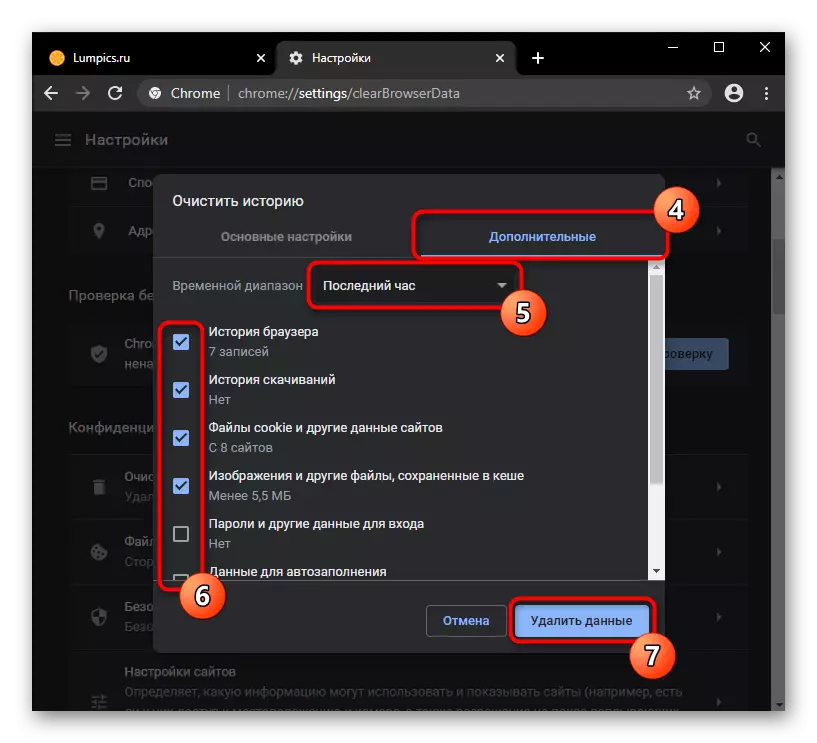
Removing passwords and autofill forms
Passwords are confidential information, and if she is no longer a place in the browser, remove them from there. The same category of private information should also include data regarding methods for paying purchases on the network, addresses of delivery of goods, data on the place of residence, etc.
- All this is in the Auto-Filling Settings block. Consistently go to each tab and delete what should be in Chrome.
- Purge on the desired item and via the menu with three dots, call the context menu.
- From it, choose the "Delete" item.
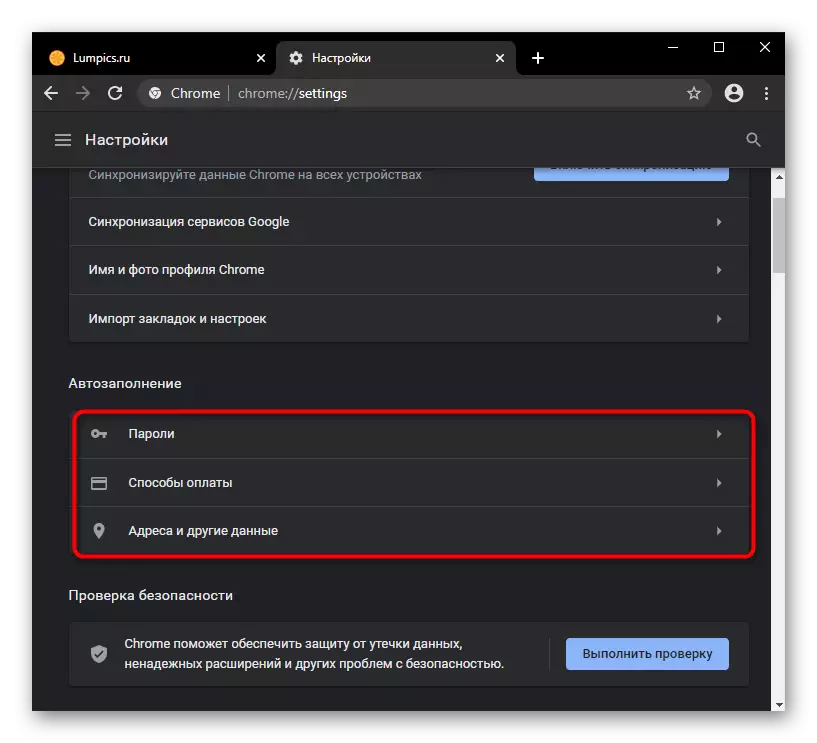

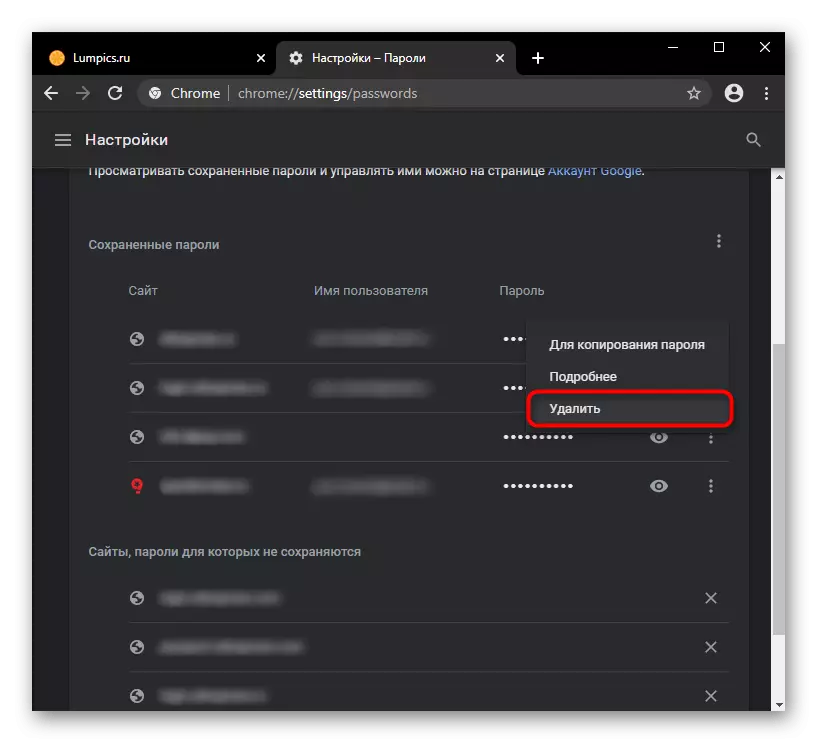
Cleaning the dummy
Those who preserved a dictionary missing words in the browser built into the browser can also remove them all or selectively. In the settings, locate the "Languages" block and go to the spell check configuration.
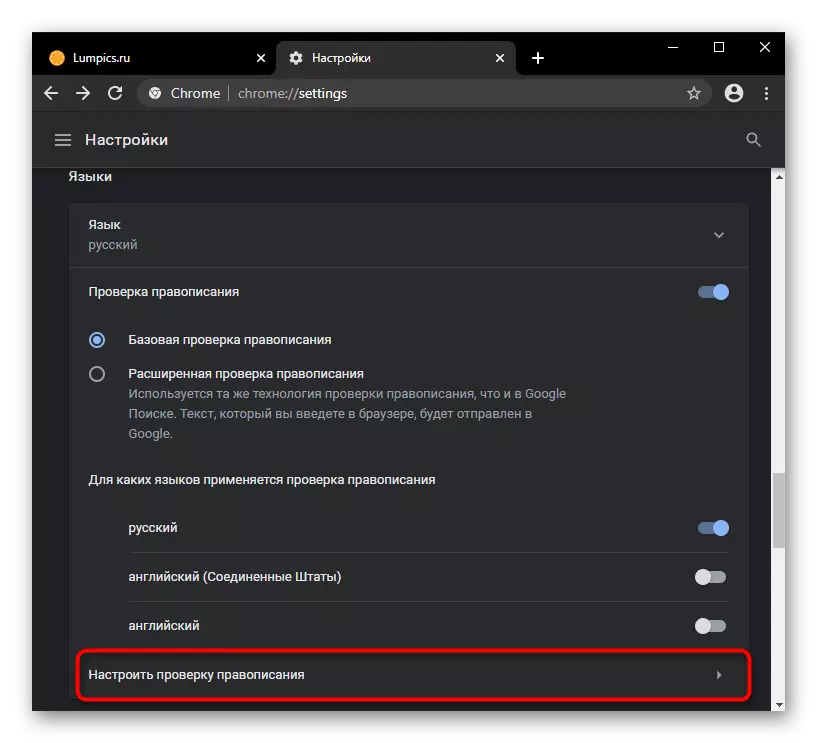
Each added word can be removed here by pressing the cross to the row to the right.
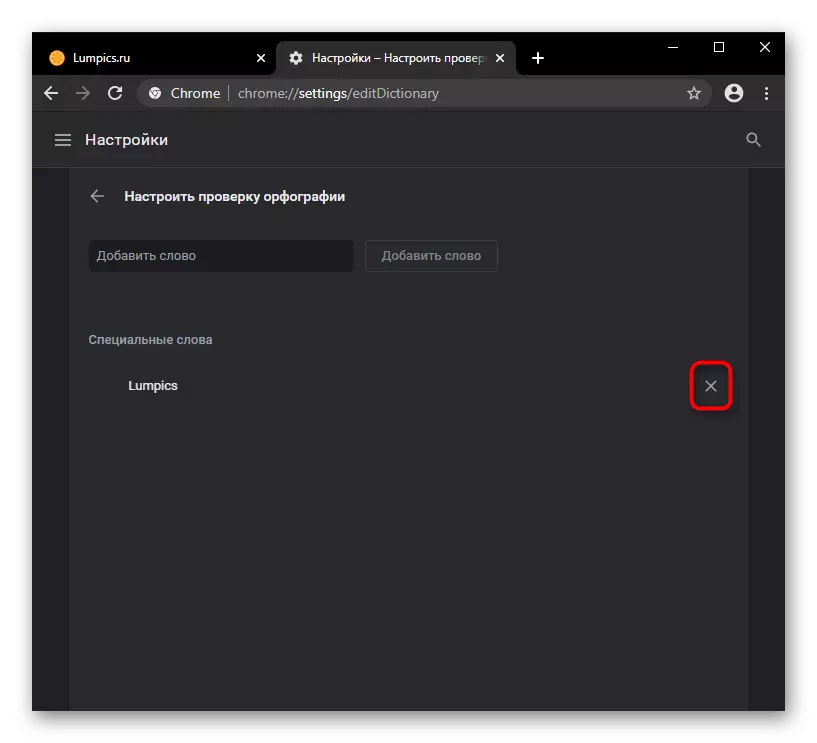
Removal theme of decoration
You can also return the web browser to the web browser through the "Settings". Watch out the "Appearance" block and click on "Reset" in the "Topic" string.

Delete bookmarks
If you are no longer going to use bookmarks and confident that you do not need them, remove them. The easiest way is to use the "Bookmark Manager", called via "Menu"> "Bookmarks" or the hot key Ctrl + Shift + O.
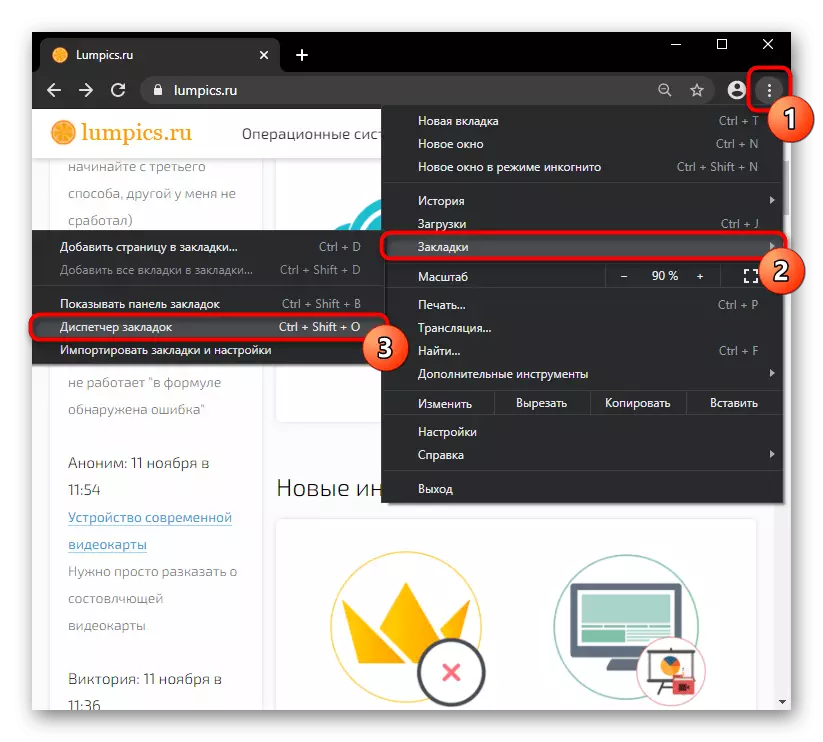
It is not very convenient to delete one thing (but if you need this method, press the right mouse button for each such tab and select the appropriate item), so we offer a lighter method. Clicking the Ctrl key, click on all saved sites, and at the end click the Delete button at the top.
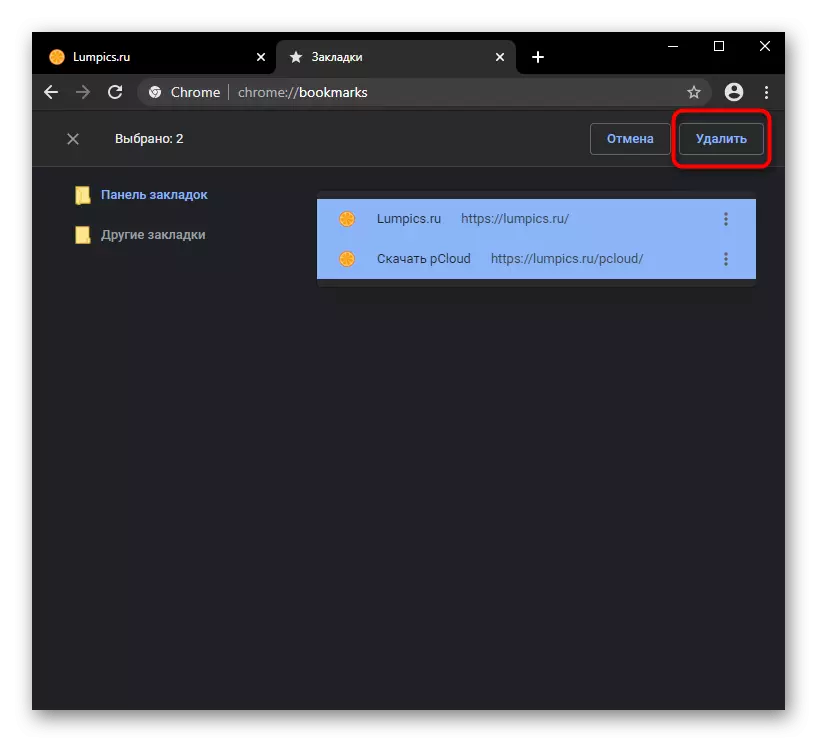
Do not forget that if you created custom folders, it is faster to remove them entirely by clicking on them on the left side of the window with the right mouse button.

Removing extensions
In the presence of installed extensions, it will not be difficult to remove them. You can quickly enter the right menu by clicking on the icon in the form of a puzzle to the right of the address string, and then on the "Extensions Management" line.

Click the "Delete" button on the tile of those add-ons from which you want to get rid of.

Removing visual bookmarks
In the new web browser tab, frequently visited URLs in the form of bookmarks with site icons are always displayed. Any of them can be deleted if you hinder the cursor and wait just a second to appear the service menu.
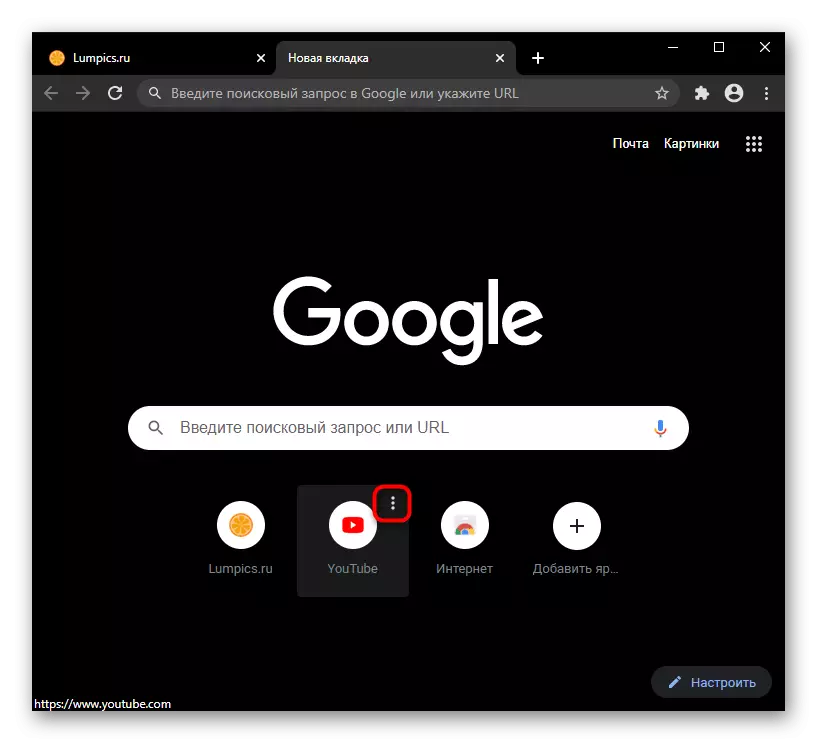
It will be necessary to simply "delete" the site from the list of fixed.

Deleting Quick Access Page
This and the next setting is rarely needed by the user to remove, but if you decide to remove all traces of work with Chrome, or some of them function incorrectly (for example, an unfamiliar page or a search engine has been updated to another without your knowledge), you will have to perform and These types of cleaning. However, such actions are usually a consequence of a virus infection of the computer, so we recommend additionally resort to the last section of our article, telling about the removal of malicious software from the PC.
So, if you start a browser when you start a browser, you will achieve an unnecessary page, in the settings, get to the "Start Chrome" block and either remove the address via the button with three dots and assign the site you prefer to the "Add page" button, or change the parameter to the "New Tab" - And then it is she who will be shown when opening the program.

Change search engine
The search engine without problems is regulated by the user to a personal discretion, and if you are not satisfied with the presence of extraneous options, erase them and assign the necessary search engine standard. The "Search Engine" settings block corresponds to the change in this parameter. If you just just change the search engine, select it through the drop-down menu. To remove those search engines that you did not add or added, and unnecessary now, go to "Search Engine Management" and delete them using the service menu.

Option 3: Removing Profile
In some cases, the easiest to erase the profile itself, creating a new one. This method is relevant only if you really understand that it will entail removing absolutely all the data that is now in Google Chrome.
- Click on the Google User avatar located next to the browser menu, and then click on the gear button next to the "Other Users" row.
- Mouse over the user, whose profile you want to remove, and click on the button of the service menu.
- Select "Delete User".
- A list of important personal data will be displayed, which will be lost with the profile. Confirm your action by re-pressing the button with the same name.
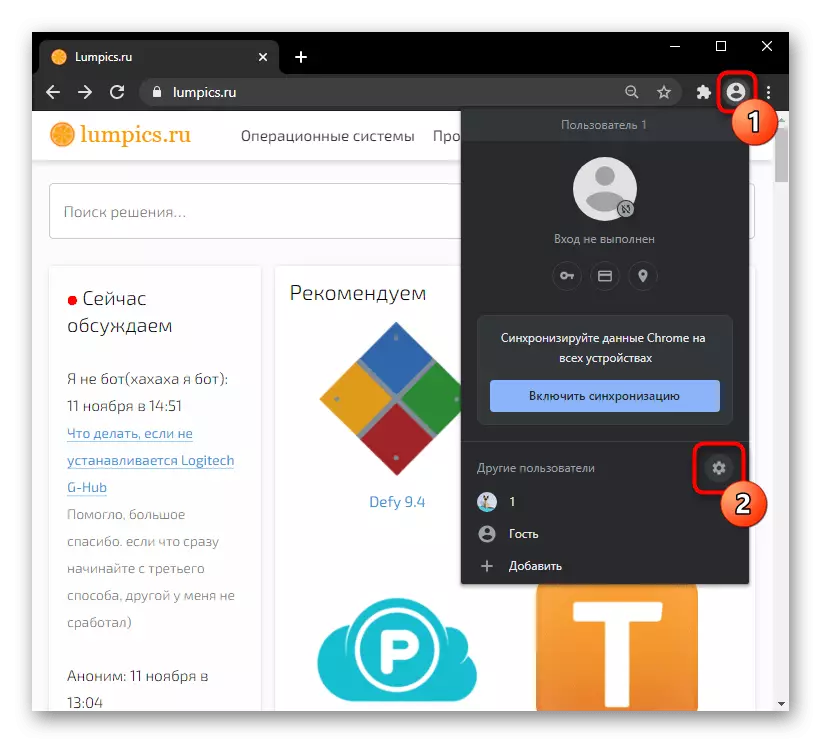
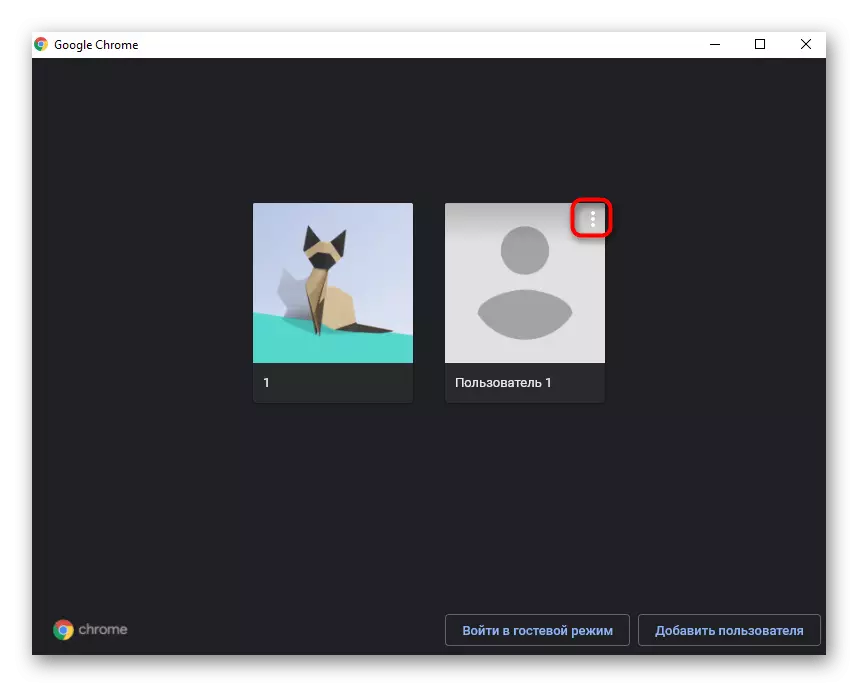
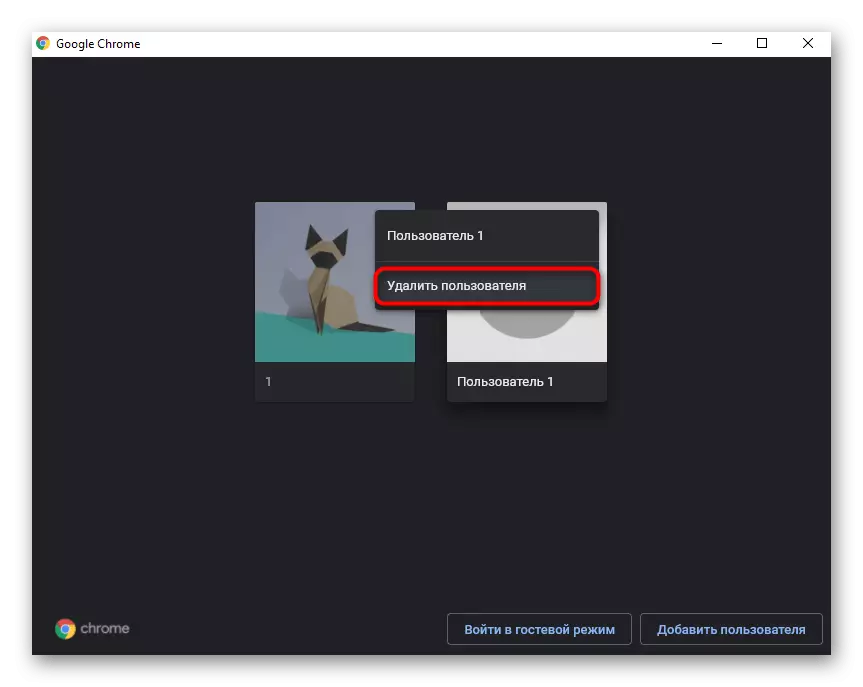
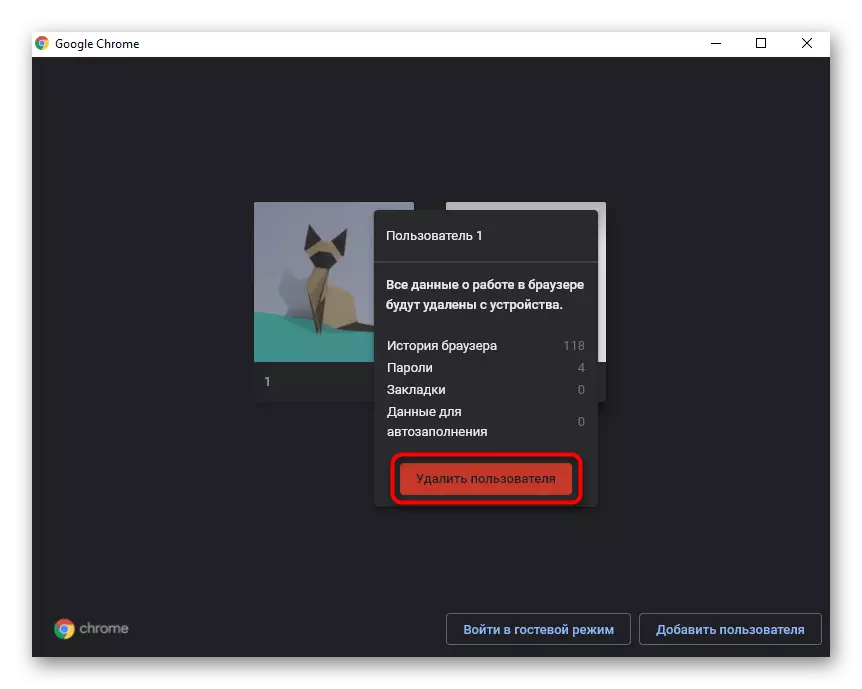
Option 4: Delete a folder with a profile
The most radical method of all suggests deleting a folder with personal data located in one of the work folders of Google Chrome. In this case, as in the previous one, there will be a complete removal of the entire profile or all profiles, which is in the web browser. This can be used when the program does not work as you need, but it does not have damage to system files (that is, formally chrome starts normally, but some of the functions do not want to work correctly or there is still some kind of problem). However, sometimes such removal can help both in a situation where the browser does not open.
- Open the "Explorer" in Windows and go along the path C: \ Users \ user_name \ APPDATA \ LOCAL \ Google \ Chrome \ User Data, where username is the name of your account in the operating system. If you do not see the AppData folder, turn on the display of hidden files and folders according to one of our following instructions.
Read more: Displays hidden folders in Windows 10 / Windows 7
- When in a browser only one user, you can delete the User Data folder. If you want to remove only one of the profiles (provided that in chrome there are several of them), go to "User Data" and select the desired folder. The first profile is called "Default", and it appears immediately with the first opening of the program after its installation. Folders "Profile 1", "Profile 2", etc. are, respectively, each subsequent profile created after the previous one. Therefore, if you can not navigate without the names of profiles, remember what kind of profile it was created.
- In order to verify the working capacity of the browser, you can not delete the profile, but simply transfer it, for example, to the desktop. If the profile was the only one, the "User Data" folder re-create automatically and you will get a clean web browser. If there are several profiles, the new will have to create yourself.
- In the future, you can postpone part of the data from the old folder with the profile to the new to quickly return any data. So, for example, you can enroll with the files "Bookmarks" (bookmarks), cookies (Cookies), "History" (History), "Login Data" (data for entering sites), etc., simply by following the file replacement .

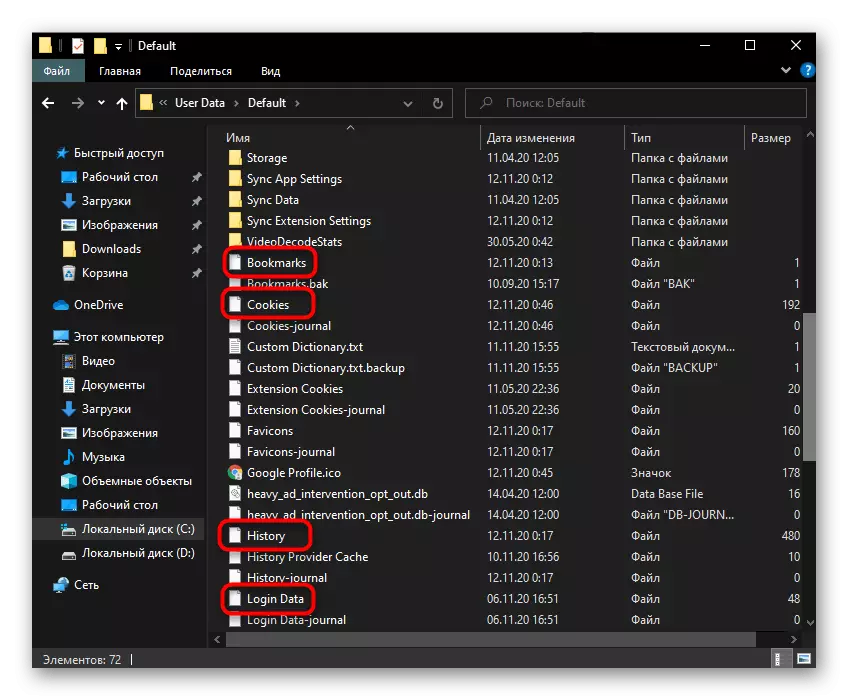
Search for malicious software that affects the browser
Often, the need to clean the browser is caused by the presence of advertising in it or the appearance of settings that the user has not performed. This usually indicates the presence of an advertising or other type of malicious software that affects the work of Chrome. To find out if you can use several recommendations at once.Built-in scanner in chrome
With a normally open Google Chrome, you can use the scanner built into the settings of this program.
- Being in "Settings", scroll through their list to the end, deploying the "Additional" block and straightened to the end. The last item "Delete Malicious Software from Computer" is also interested.
- Click the Find button and wait a while the scanning is performed.
- Further actions depend on whether something was found, and all recommendations for troubleshooting will see in the same window.


Self removal of the virus
Not always the built-in scanner can find the virus on the computer. Sometimes the user also discovers a dangerous program in the OS, removes it, but the traces still cause an abnormal behavior of the browser. In order to perform a more thorough scan of the entire PC and remove the remains of the virus, it is worth it to solve this problem comprehensively. Our site has an article showing the removal of malicious software in Windows, as well as manual search for its traces. The instruction is universal and fully suitable for any type of viruses affecting the activities of the browser, so perform all the steps from the "Option 2" of the material on the link below, adapting only the name of maliciousness.
Read more: Removing the virus and browser advertising
